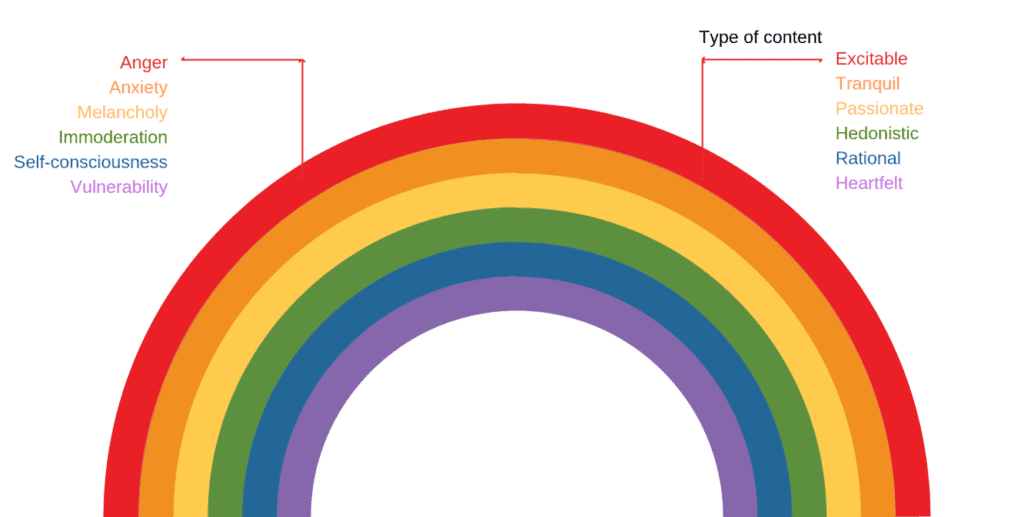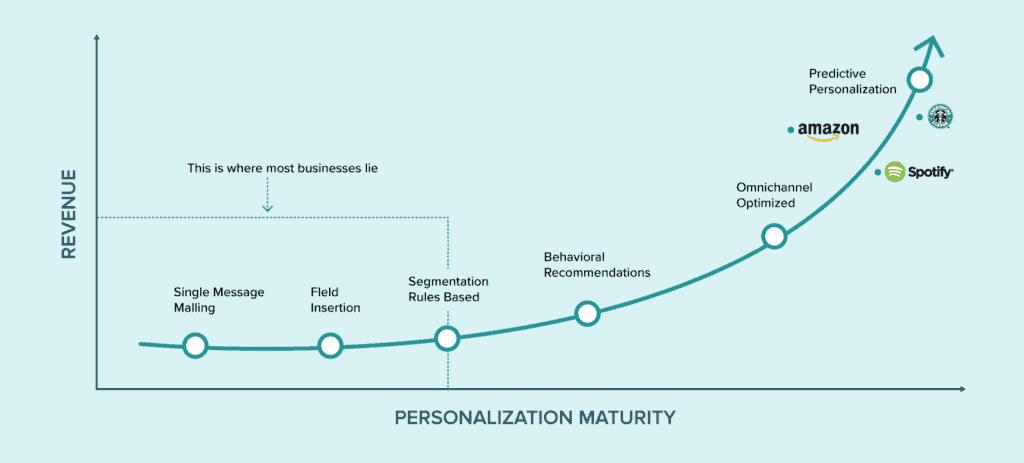
“We have always done it this way,” is how so many ideas die in the cradle.
With constantly changing technology, interminable bombarding of content, shrinking attention spans, ad fatigue, post-millennial market outlook, heightened consumer awareness, brand inclination towards experimentation, and the myriad small but significant changes happening around, your whole perspective about content should change. From the what (form) and where (platform) to how (distribution) of content, every single aspect should be probed, catechized, and even aborted, if required.
Disruption, then, is the name of the game.
1. Disrupt Information Delivery
There is much debate online about whether we have shorter attention spans than goldfish or gnats. And whether that’s a good thing or bad.
Prezi’s 2018 State of Attention report, however, went beyond these conjectures and actually asked business professionals what would (and wouldn’t hold their attention). They found three critical answers to the question, “What’s ‘engaging’ anyway?”
Clearly, three things separate winning content from the mediocre:
- Story
- Interaction
- Visuals
You can use these findings to your advantage. Short memory retention and declining interest in marketing and sales communication means, you can be bold, flamboyant, ridiculous, loud, flimsy, naïve, or whatever you want your brand voice to be. Even if you make a mistake, you have space to go back to your old methods.
For 23 years, Canon has managed a program of professional photographers called Explorers of Light. These professionals represent the company at events. However, they discontinued their age-old practice and signed up some 40+ amateur photographers because they wanted to “bridge the gap between the professional and the everyday person, and reach out to younger generations.”
If you think about it, it was a big risk. We can just assume the tremendous pressure their marketing team members would have gone through for everything from day to day management to final output. But the 1.2 million views on YouTuber Devin Graham’s video shows what a success this risk was:
Here’s another recent example of how brands are willing to take risks in content creation. Starbucks’ introduced their Tie & Dye Collection in collaboration with Donte Colley, a Canadian motivational dancer gifted in the art of emojis. The post garnered nearly 1.5 million views in just over three months — a great number for any campaign. Clearly, the gamble paid off.
Still want to retain a slew of very expensive professional video editors and do things the old way?
2. Disrupt Emotions
“Does your content have the emotional range of a teaspoon?”
– If Hermione Granger was a Content Strategist, would you like to be at the receiving end of this question? #MidnightMusings.
If your content is generally agreeable, there’s a distinct possibility that it is also passionless and undemanding. There’s a very interesting article on how humans have contradictory emotions; happiness can evoke anger, beauty can move you to tears, and intense feelings of love can incite jealousy.
That is why, it is very important to explore a range of emotions in your content. For instance, rational content can evoke self-consciousness in particularly high-strung and guarded people but over-the-top and excitable content can trigger people who live life in the pursuit of pleasures. Here’s an Emotional Rainbow of how you can create a range of content based on which feeling you want to trigger in your audience and then personalize it for each segment based on their reactions.

3. Disrupt Expectations
With personalization becoming a norm in retail business, we are seeing several online as well as physical businesses trying to get close and personal. From personalized offers to geo-targeting, to time-based content, the list of actions that can be “triggered” is endless. Sadly, all this is overdone – and your audience has come to expect it too. Salesforce’s State of the Connected Customer report found that 3 in 4 of 6,700 consumers surveyed expect companies to understand their needs and 3 in 5 are willing to part with personal data to enable retailers to offer more personalized experiences and recommendations!
Here, you can break the consumer expectation cycle by personalizing content based on your targeted audience’s or segment’s reaction to a campaign. This will serve a few purposes:
- You get them interacting with you.
- You have their ears for a good brand story.
- You understand (and expect) their emotions and lend direction to your campaign accordingly.
- You can go beyond their expectations.
The first step to ensure a flawless content strategy is to involve your research and marketing team to understand customers’ reaction to triggers and overall campaign response. While this may seem like an obvious thing, you’d be surprised to know how many companies don’t actually do it.
Once you have jotted down all the important triggers (emotions) that can nudge your customers towards a specific action, you can turn to martech to help you customize the journey of every individual customer right from first exposure to content through to purchase and advocacy. A web builder or personalization tool such as Duda can help you personalize the journey of a user right from content campaign through to final action.

This is especially useful for digital agencies that develop sites or run marketing campaigns for their clients. Based on the location, time, number and nature of previous visits, or devices that drive your visitors, you can “nudge” them towards intended actions using pop-ups, push notifications, scripted CTAs, or display banners. The result is a personalized and customized experience at every touchpoint with your brand:

4. Disrupt Industry Practices
While marketers are still struggling with Facebook, Twitter, Instagram and LinkedIn, while debating the point of being on Snapchat or Pinterest, people across the world are already moving on to TikTok – Facebook deemed it a threat big enough to clone it and launch Lasso, a direct competitor.
Most brands and agencies run into a block after a certain amount of success with a few marketing strategies that work well for them; after that, they need either a new, fresh outlook on content, or an entirely new platform that can open up a whole new avenue of possibilities. To improve TikTok view numbers, brands should explore new content strategies on TikTok, leveraging its unique platform dynamics to reach and engage with a broader audience.
For instance, a B2C brand might be relying on a combination of email marketing and regular Facebook updates (visual in nature) to connect with their customers. However, a simple switch to LinkedIn, and they might find themselves in new pastures of targeting opportunities.
While LinkedIn is not visual in nature, you can come up with targeted, personalized content that’s so powerful that it can override the need for visuals, combining the best of email and social media into one targeted message. Personalized, thought-provoking InMail could be your latest tool for lead generation, getting up to 300% more response rate than emails.

You can also up the ante with Sponsored InMail to a targeted audience, based on their intent and context. LinkedIn offers six different ways to establish a direct connection with the individual you’re targeting – you can show your messaging or ads to people who have the following LinkedIn elements in common with your company:
- Connections
- Groups
- Companies
- Education
- Company Followers
- Interests
It’s not just platforms that are disrupting industry practices – technology plays an equal role. Take the rise and rise of AI for personalization. A solution such as RichRelevance enables retailers to “hyper-personalize” the shopping experience by using AI to create individual behavioral profiles and progressively update them, detect targets’ context in real-time, and send them a personalized “best offer” on a platform that offers them the most convenient experience, based on their individual preferences.
Summing Up
As brands get better at personalization and integrate it closely into their marketing strategies, they must track their (and their competitors’) maturity level and know its impact on the bottom line.

The rise of new digital, experience-based platforms, analytical processes for the intelligent collection and use of customer data, and martech that automates the planning and execution of marketing campaigns represent a great opportunity for tech-savvy brands to steal a march on their competitors. Delivering a personalized customer experience across multiple channels, along with relevant messaging at each interaction will help brands build and maintain relationships with individual customers.
Just remember, every problem is an opportunity… and if you look closely, it is not even disguised!
Want to learn more?
If you’d like to become an expert in UX Design, Design Thinking, UI Design, or another related design topic, then consider taking an online UX course from the Interaction Design Foundation. For example, Design Thinking, Become a UX Designer from Scratch, Conducting Usability Testing or User Research – Methods and Best Practices. Good luck on your learning journey!
